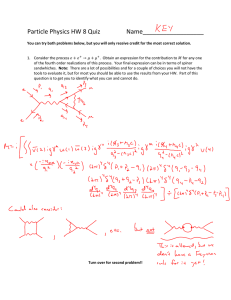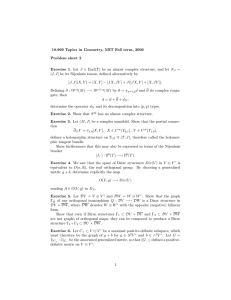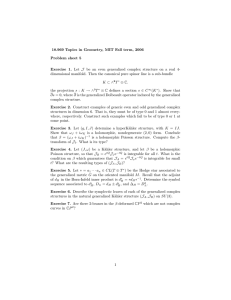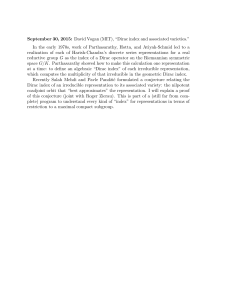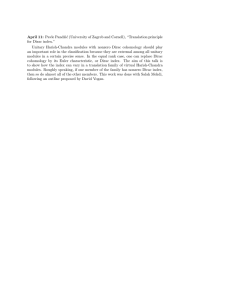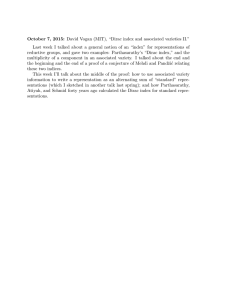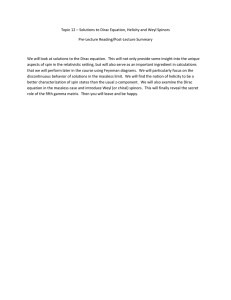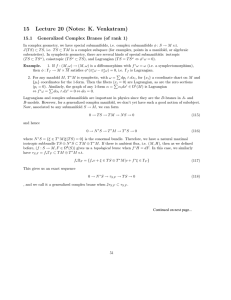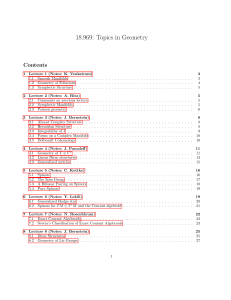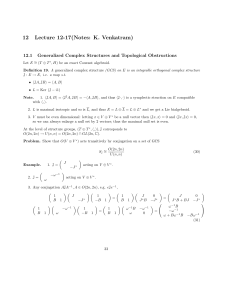18.969 Topics in Geometry, MIT ... Problem sheet 4
advertisement
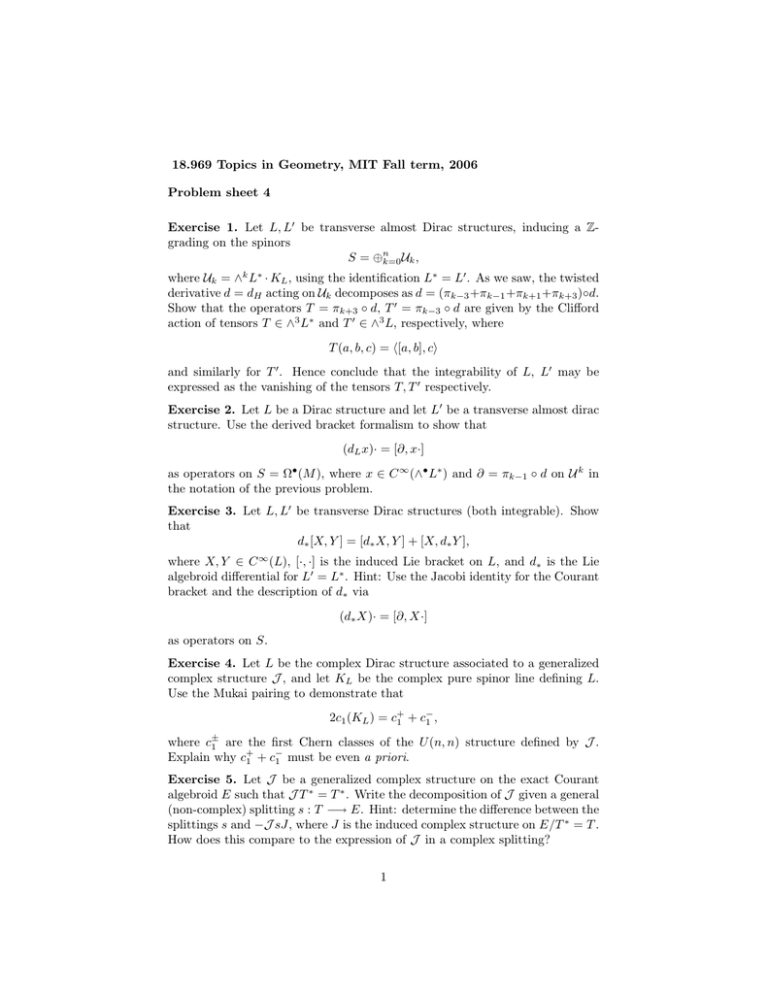
18.969 Topics in Geometry, MIT Fall term, 2006 Problem sheet 4 Exercise 1. Let L, L� be transverse almost Dirac structures, inducing a Zgrading on the spinors S = ⊕nk=0 Uk , where Uk = ∧k L∗ · KL , using the identification L∗ = L� . As we saw, the twisted derivative d = dH acting on Uk decomposes as d = (πk−3 +πk−1 +πk+1 +πk+3 )◦d. Show that the operators T = πk+3 ◦ d, T � = πk−3 ◦ d are given by the Clifford action of tensors T ∈ ∧3 L∗ and T � ∈ ∧3 L, respectively, where T (a, b, c) = �[a, b], c� and similarly for T � . Hence conclude that the integrability of L, L� may be expressed as the vanishing of the tensors T, T � respectively. Exercise 2. Let L be a Dirac structure and let L� be a transverse almost dirac structure. Use the derived bracket formalism to show that (dL x)· = [∂, x·] as operators on S = Ω• (M ), where x ∈ C ∞ (∧• L∗ ) and ∂ = πk−1 ◦ d on U k in the notation of the previous problem. Exercise 3. Let L, L� be transverse Dirac structures (both integrable). Show that d∗ [X, Y ] = [d∗ X, Y ] + [X, d∗ Y ], where X, Y ∈ C ∞ (L), [·, ·] is the induced Lie bracket on L, and d∗ is the Lie algebroid differential for L� = L∗ . Hint: Use the Jacobi identity for the Courant bracket and the description of d∗ via (d∗ X)· = [∂, X ·] as operators on S. Exercise 4. Let L be the complex Dirac structure associated to a generalized complex structure J , and let KL be the complex pure spinor line defining L. Use the Mukai pairing to demonstrate that − 2c1 (KL ) = c+ 1 + c1 , where c± 1 are the first Chern classes of the U (n, n) structure defined by J . − Explain why c+ 1 + c1 must be even a priori. Exercise 5. Let J be a generalized complex structure on the exact Courant algebroid E such that J T ∗ = T ∗ . Write the decomposition of J given a general (non-complex) splitting s : T −→ E. Hint: determine the difference between the splittings s and −J sJ, where J is the induced complex structure on E/T ∗ = T . How does this compare to the expression of J in a complex splitting? 1 Exercise 6. Let J be an almost generalized complex structure. Show that NJ (x, y) = [J x, J y] − J [J x, y] − J [x, J y] − [x, y] is tensorial, and express it in terms of the tensors T, T � from the first exercise. Exercise 7. Let J be a generalized complex structure. Show that eθJ (T ∗ ) is a Dirac structure for all θ. Exercise 8. Let ϕ = eB+iω Ω be the complex pure spinor corresponding to a generalized complex structure J , and let f : Δ −→ T be the inclusion of the symplectic foliation determined by J associated with the canonical Poisson structure π. Show that f ∗ ω coincides with the symplectic form induced by π on Δ. Exercise 9. Let (g, I, J) define a hyperKähler structure, so that (g, I), (g, J) are Kähler and IJ = −JI =: K. Let ωI , ωJ , ωK be the associated symplectic forms. Verify that for a, b, c real and a2 + b2 + c2 = 1, J (a, b, c) = aJI + bJωJ + cJωK squares to −1, and is an orthogonal endomorphism of T ⊕ T ∗ . Also prove that � 0, J (a, b, c) is a B-field transform of a symplectic structure. Conclude for a = that J (a, b, c) is an integrable generalized complex structure for all points on the sphere. 2
